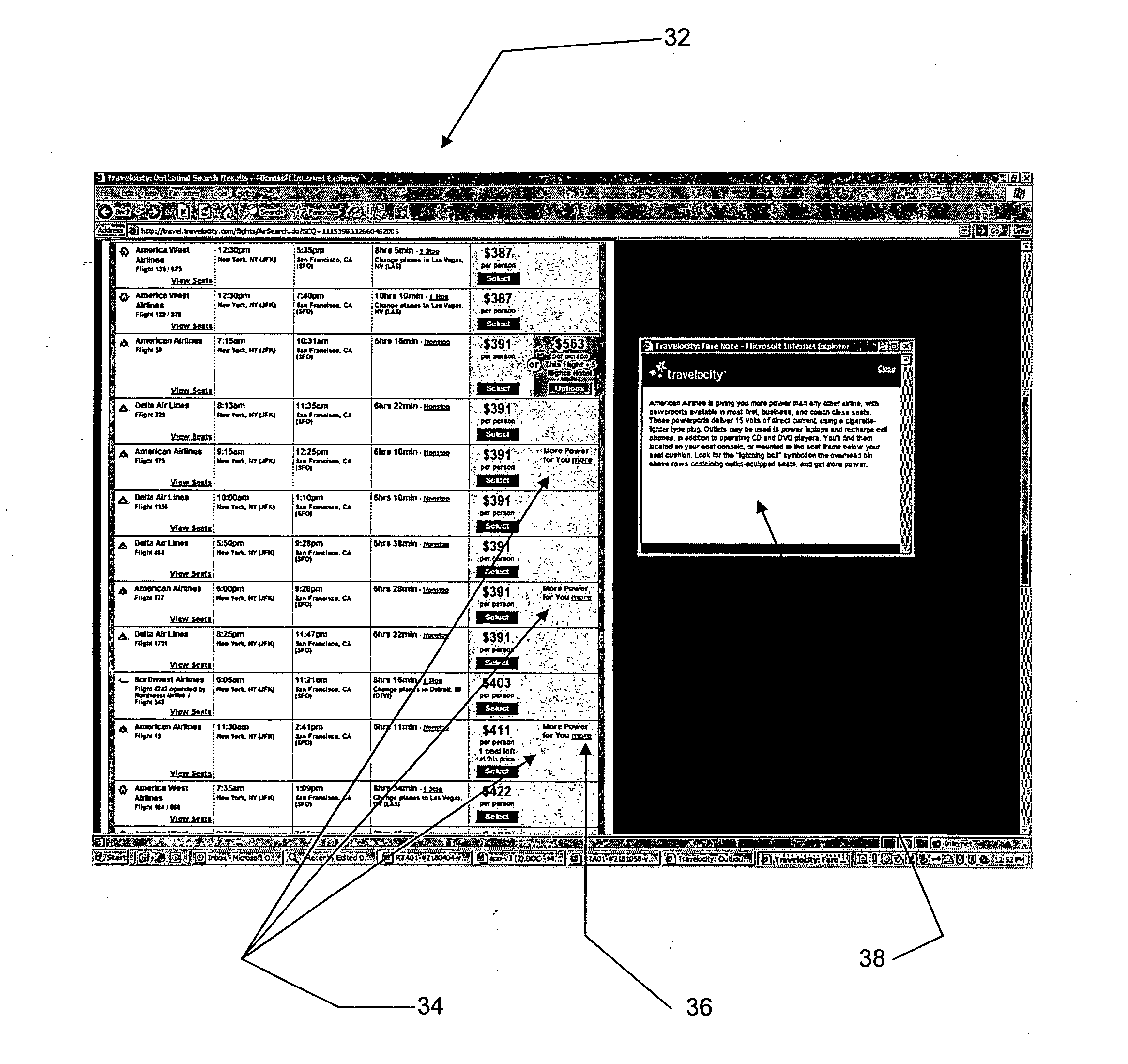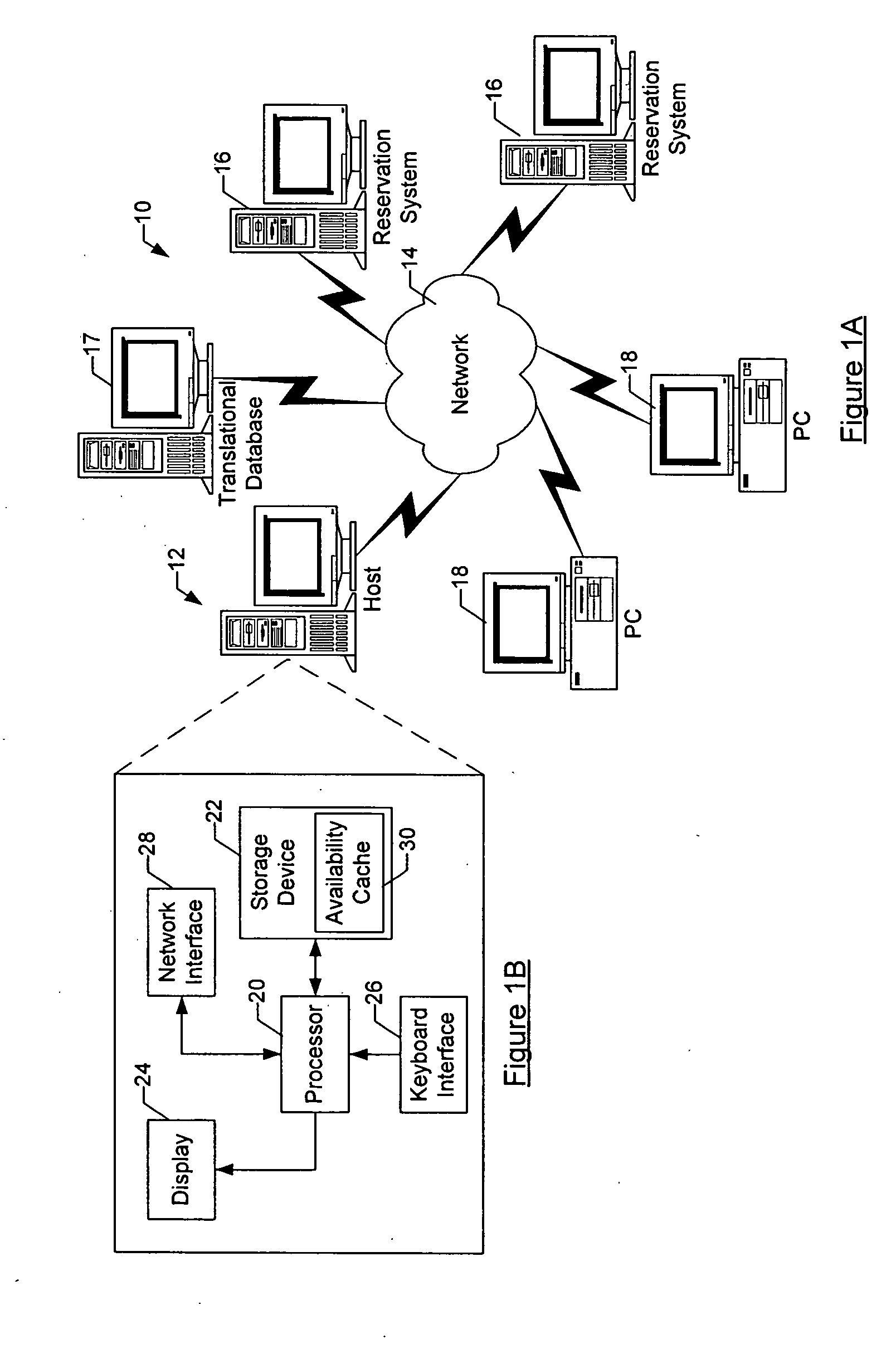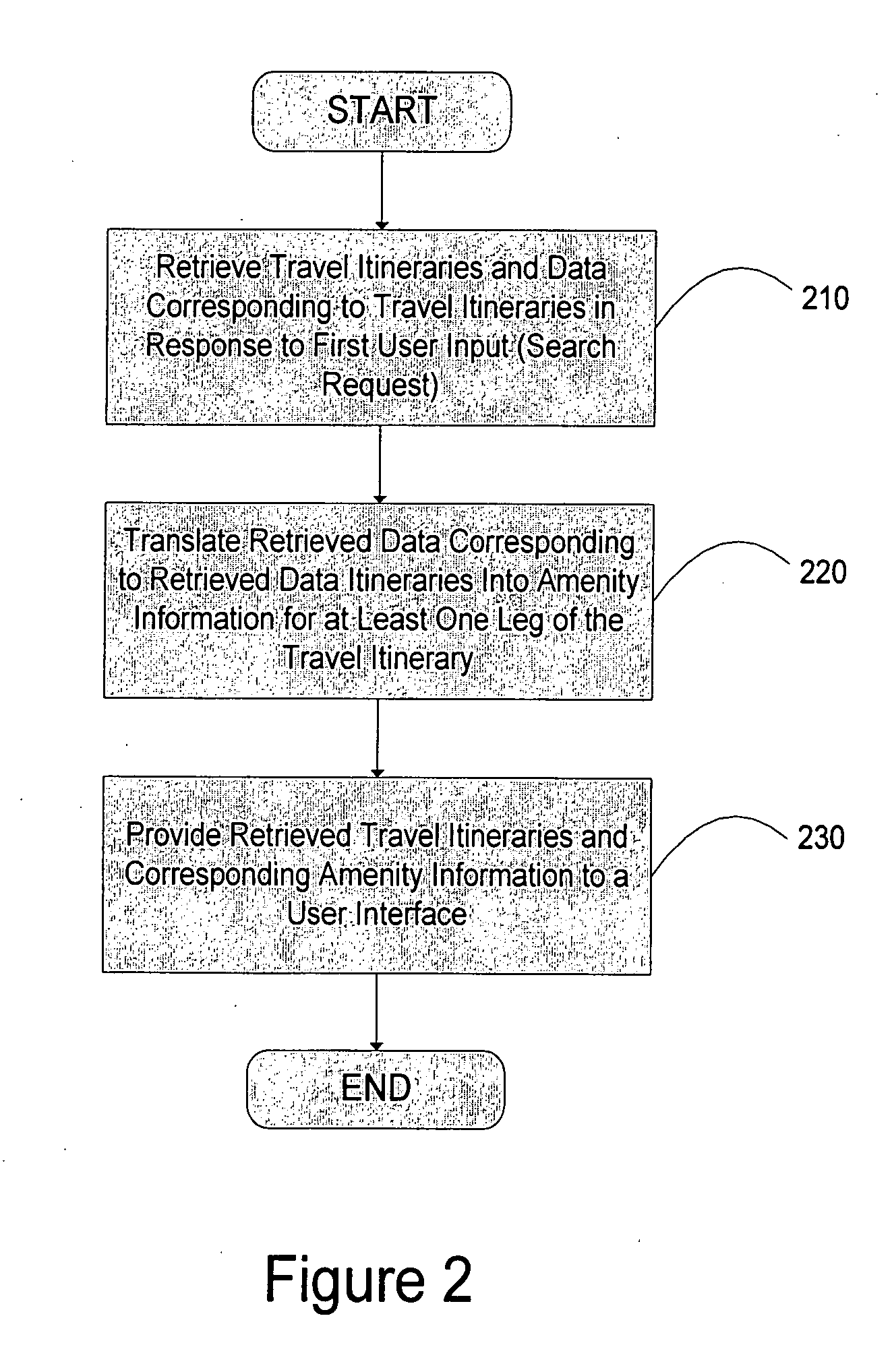These systems may include simple or complex methodologies for maintaining inventory and providing product and / or service availability information.
Initially, these systems were difficult to use and did not always provide the best solution to a
consumer's query.
While these early systems provided timely results and reduced
processing load on the CRS, they did not always provide the best solution to the
consumer.
Unfortunately, such a process may not provide the best solution to a
consumer or may miss an opportunity to market different fares to a customer that may maximize profits for the supplier, while also meeting the consumer's goals.
For example, the results of a search for low-cost airfares may, in conventional systems, include line-by-line listings of flight options that correspond to lowest-cost product options without providing supplemental attributes or offers information that may be pertinent to the user's
purchasing decision but may not be reflected in the original user query (which is often limited only to price and itinerary).
In addition, while conventional search systems may retrieve data corresponding to one or more aspects of a product option, such systems do not translate such retrieved data into attributes information that may be used by a consumer to make an informed product choice from the listing of product options returned by a conventional search
system.
In addition, while some conventional search tools provide for the
graphical display of price and / or departure options for products (such as low-fare airline tickets) in a more concise format (such as a multi-axis display), such tools do not translate data associated with particular flight itineraries (such as the aircraft type or airline) into attributes information (such as the availability of in-flight entertainment, extra legroom, etc. that may only be available on selected aircraft or air carriers).
Thus, these conventional search tools lack the capability of providing the user with graphical indications of attributes information related to the various itineraries offered in order to make the user aware of select itineraries that may have desirable supplemental benefits or attributes (such as the above-mentioned comfort attributes or limited-time incentives (such as rebates or double frequent-flier miles promotions)).
In addition, conventional search tools providing graphical displays of the options returned by a search also do not allow for the presentation of attributes information in
interactive displays embedded in the product listing such that the user may select the interactive display corresponding to the displayed attributes information (displayed, for example on a line listing with a particular product option) and, in response, be presented with an embedded
graphical display capable of displaying one or more items of additional attributes information related to the product option.
These limitations in the current
system may create a burden on inventory systems.
Specifically, since conventional search systems are not capable of translating data related to selected product options (such as flight itineraries) into attributes information, such search systems are incapable of providing the user with attributes information prior to the selection of a particular product option.
Conventional search systems lack the capability of translating commonly-retrieved product option data (such as aircraft type or airline) into
usable supplemental attributes information (such as Electrical power availability or extra legroom) that may be presented to a user prior to the selection of a product option.
Further, some attributes (that may be ascertained by translating data often retrieved from a product
database with product option information) may not be ascertainable at all by a user until the user actually commences their journey on the selected itinerary.
Each time a product option is selected and / or rejected in a user search for such attributes, it places added burden on the
inventory system to process the request.
 Login to View More
Login to View More  Login to View More
Login to View More 


